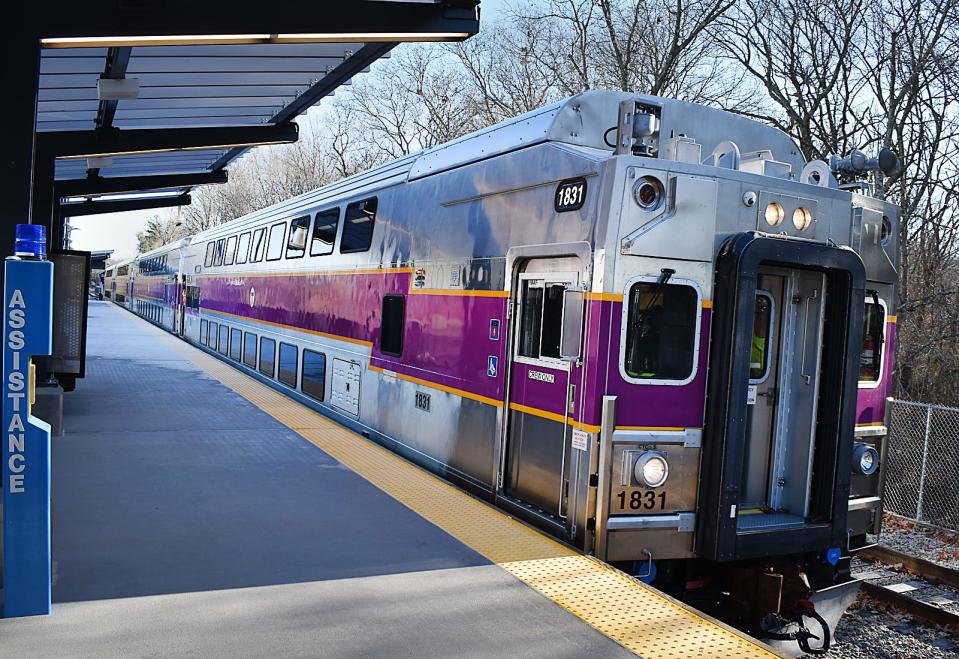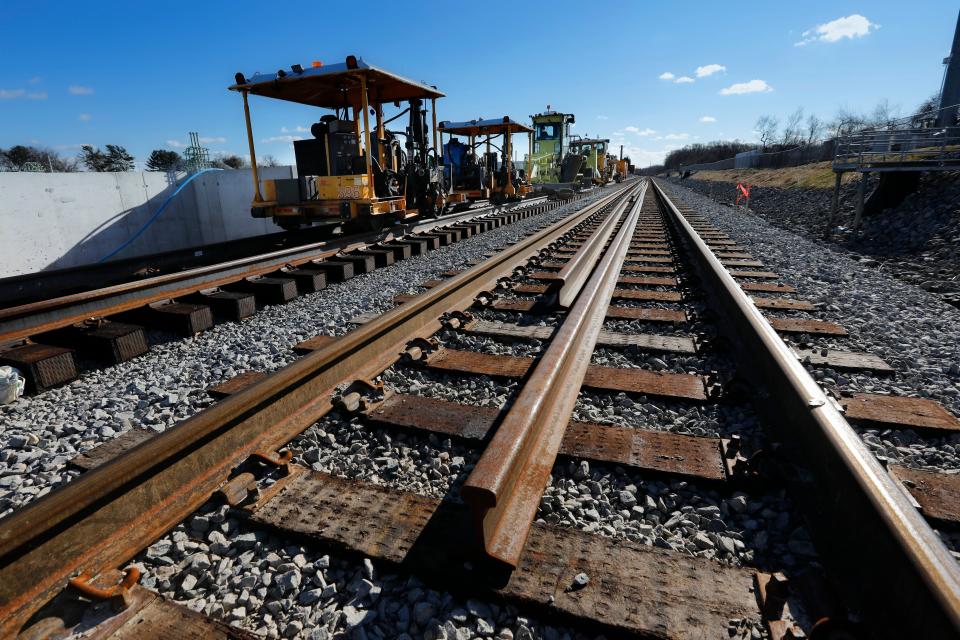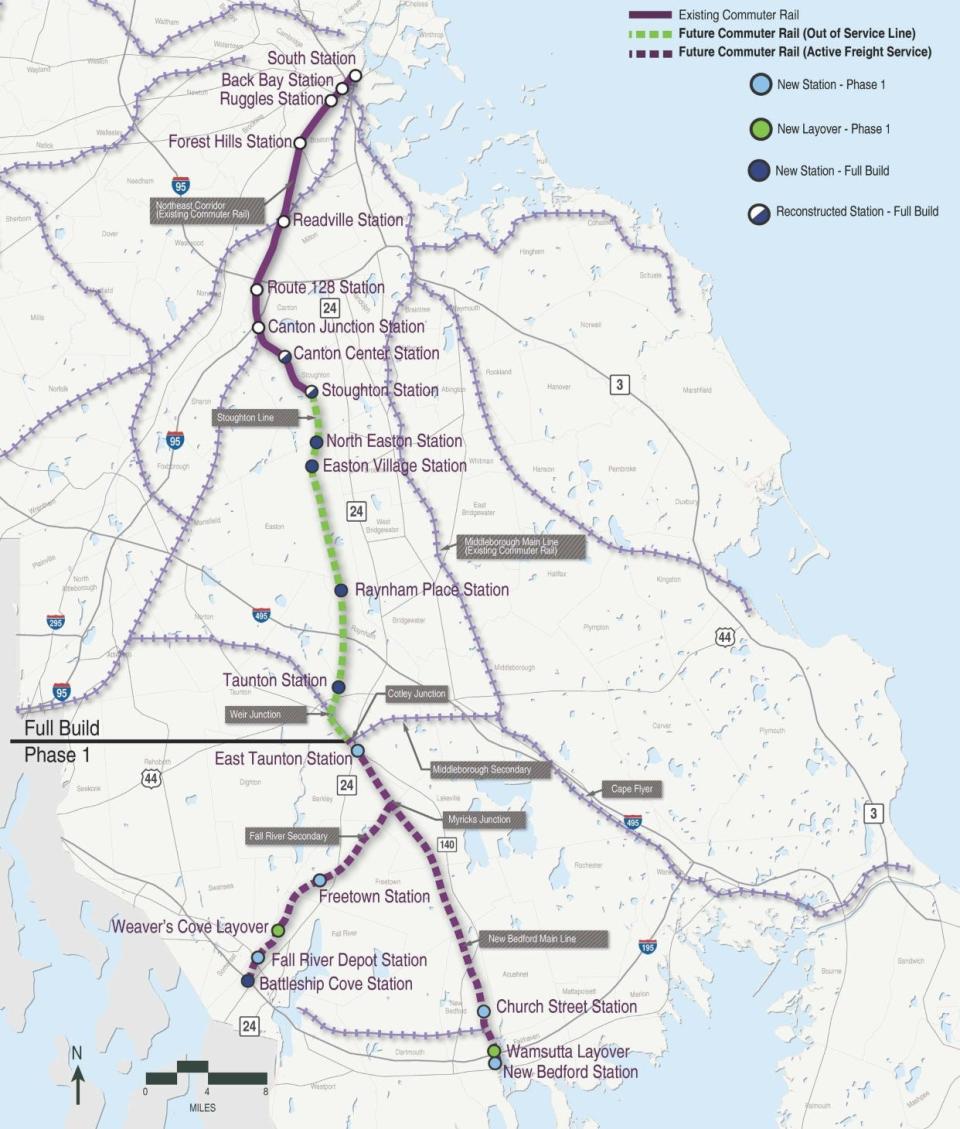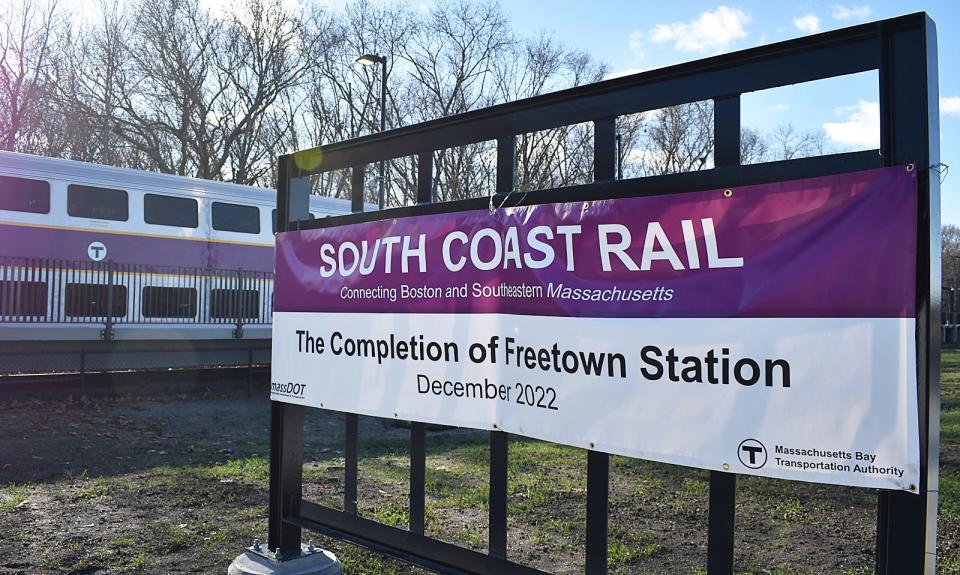Transit group: South Coast Rail is 'compromised,' but it can be made better. Here's how.
In about half a year, South Coast Rail is expected to be ready to carry passengers from Fall River, New Bedford and Taunton to Boston — the end of a decades-long journey to reconnect the SouthCoast to the state capital. But this isn't the end of the line.
Jarred Johnson, executive director of the public transportation advocacy group TransitMatters, said he worries the state may not be ready to operate the line most efficiently, with key questions about South Coast Rail operations so far publicly unanswered.
"We want this thing to work well," Johnson said in an interview. “Here are some big things that it’s possible the state is missing."
Train timeline: Tracking Fall River's history from Old Colony Railroad to South Coast Rail
Make South Coast Rail not a 'commuter' train but a regional train
While local legislators have long touted the benefits of MBTA commuter rail, TransitMatters advocates for stripping out the “commuter” label — urging train use beyond morning and afternoon rush hours.
The “regional rail” idea, Johnson said, involves “getting rid of the concept of 'commuter rail' and moving toward a rail network that works for all types of trips and all types of people.”
In the years following the COVID pandemic, the rise of remote work and hybrid or flexible schedules mean many people don’t adhere to the standby 9-to-5 workday, he said. The train shouldn’t only serve commuters.

“Orienting South Coast Rail to an all-day, seven-day-a-week model is essential for its success,” he said.
It’s unclear when commuter trains would serve the SouthCoast, or how many, but state transportation officials have indicated two or three trains may run during each rush hour per day.
Running the numbers: Would South Coast Rail be the cheapest way to commute to Boston?
Johnson said more frequent trains would make travel along the South Coast Rail’s route more appealing; for people across income lines, including those who work different shifts, study at area colleges, or need to travel to other communities for whatever reason, getting around easily by train means less time spent in traffic, burning gas.
“We’ve got a huge asset here," he said. “We’ve got more than 300 miles of commuter rail track that is sitting empty the majority of the day while our roads are jam-packed.”
Transit group worries about MBTA bottleneck in Dorchester
Traffic jams can occur on rail lines, too — another issue Johnson said may crop up with South Coast Rail.
Trains from Fall River and New Bedford will meet in Berkley, pass through Taunton and hook up with the Middleboro/Lakeville line.

“North of that section ... through Dorchester and Quincy, the trains run on a single track for a significant amount of time," Johnson said.
In that area, trains from the Kingston, Greenbush and Middleboro/Lakeville commuter rail lines all converge onto one track, soon to be joined with South Coast Rail trains — a bottleneck that can cause delays and severely limit the service.
Delivering benefits: South Coast Rail promises relief for commuters and greater job options
“That dramatically restricts the amount of trains that can go up and down that ride," Johnson said. “It affects not just Fall River and New Bedford, but it impacts the entire SouthCoast, and arguably folks in the city of Boston as well.”
His group is advocating for "serious design funding” to open that bottleneck and expand rail lines just south of Boston, saying ideally that should be accomplished in the next three to five years. In the meantime, he said, additional track can be built at stations in the area so trains can move aside while others roll past.
“It really is a critical piece,” he said.

TransitMatters: South Coast Rail's Phase 2 is the better plan
The South Coast Rail route itself is a problem — “a compromised plan,” Johnson said.
What will be rolling through Taunton, Fall River and New Bedford in summer 2024 is just Phase 1 of a proposed two-phase plan. This first phase connects these SouthCoast cities to Boston via diesel-powered engines through the Middleboro-Lakeville line.
Phase 2, or what South Coast Rail refers to as the “full build,” would use electric engines and connect to the Stoughton line. While this full build is much more expensive, TransitMatters says electric engines are cheaper to run than diesel, break down far less often than diesel, and travel much faster.
Going through Stoughton would also avoid that bottleneck issue.
What’s more, Phase 2 would include more stations, including one in downtown Taunton, others in Raynham and Easton, extend Fall River’s train service to Battleship Cove. Johnson said while he respects that people on the SouthCoast have waited decades to get any MBTA service to Boston, Phase 2 is the better plan, and the one we should have now.
“We’ve not heard any news on Phase 2,” he said.
MassDOT has no timetable for Phase 2 completion more specific than “the 2030s.”

Weekend service: 'If you build it, they will come'
A schedule for trains to Fall River and New Bedford has not yet been publicly released, so it’s not known how often trains will be available per day. MBTA officials have estimated that the trip from end to end will take about 90 minutes.
It’s also not yet known for certain if weekend service will be available.
“The travel times are predicted to be pretty long. You could ride about the same as driving, maybe slightly slower,” Johnson said, meaning South Coast Rail’s biggest benefit to consumers would be convenience rather than time-saving.
But the outlook is different when you're not headed to work — if you’re headed along the route for fun, to visit family, or countless other reasons.
“The weekend is when people have a bit more tolerance,” Johnson said. “The weekend is where people are more willing to put up with a longer ride because they’re in less of a hurry. So I certainly feel like it’s a missed opportunity for the weekend service.”
While some transit critics have predicted low ridership figures from the SouthCoast might not make South Coast Rail economically viable, Johnson said he feels differently — but it’s imperative that the train be a cheap, convenient option. That means running more trains, not fewer.
“The service has to be run often, or else people are not going to shift their patterns around it,” Johnson said.
Besides the environmental benefits, Johnson said there are many other reasons why his group works to get people out of cars and onto public transit -- among them reduced wear and tear on public highways, and the threat of vehicle violence. A recent poll showed "very few" drivers in Massachusetts feel safe on the roads.
Johnson noted that not so long ago, people “thought it was insane” to dig train tunnels underground instead of traveling by slow horse-drawn trolleys — today, hundreds of thousands of people ride Boston’s subway system daily.
“If you build it, they will come," Johnson said. “If you build it well, and run it often enough, people will come.”
Dan Medeiros can be reached at dmedeiros@heraldnews.com. Support local journalism by purchasing a digital or print subscription to The Herald News today.
This article originally appeared on The Herald News: South Coast Rail to open in 2024; train advocates see key flaws

